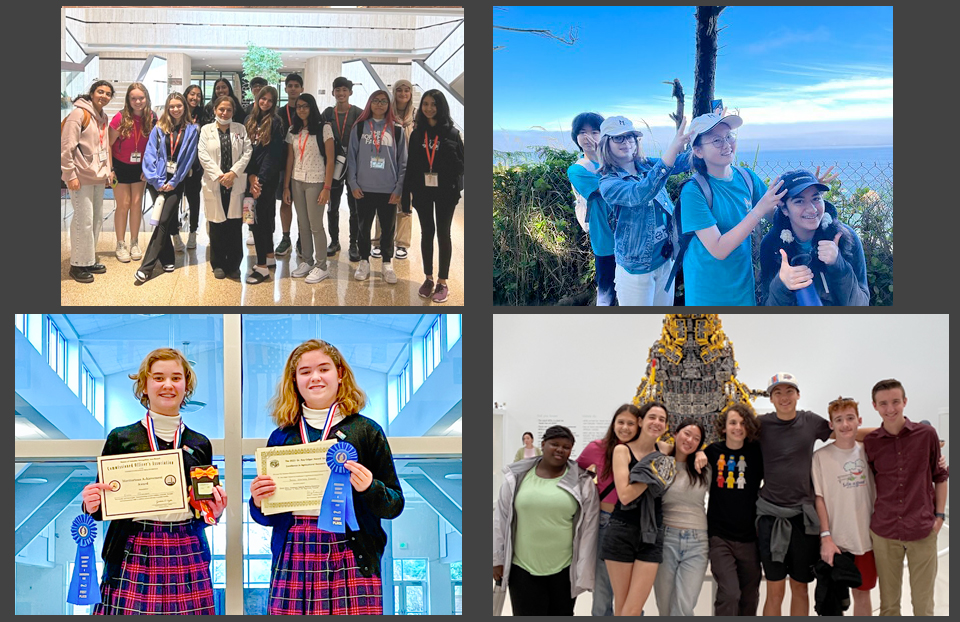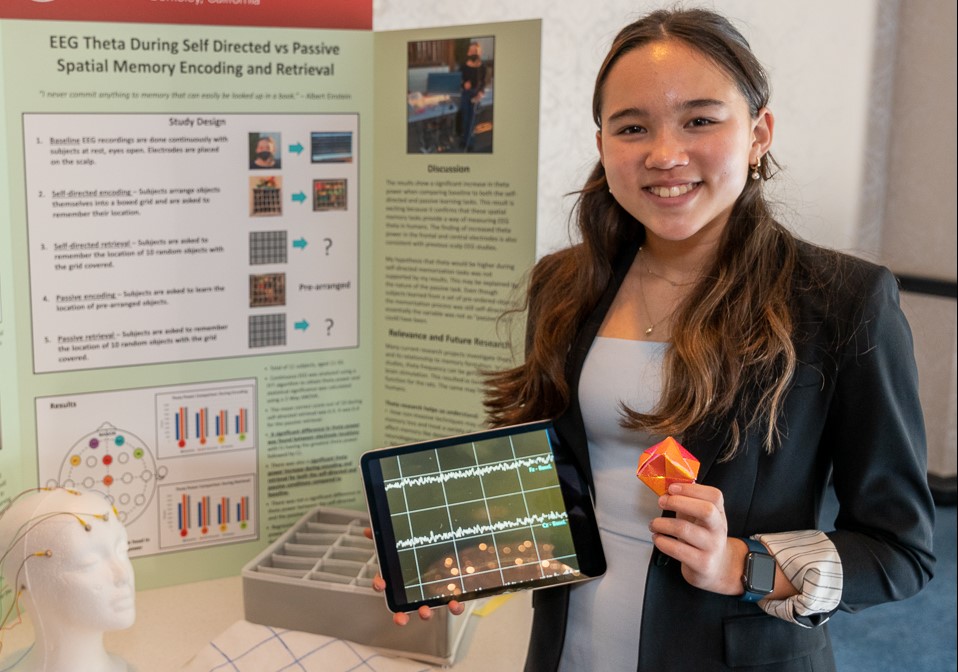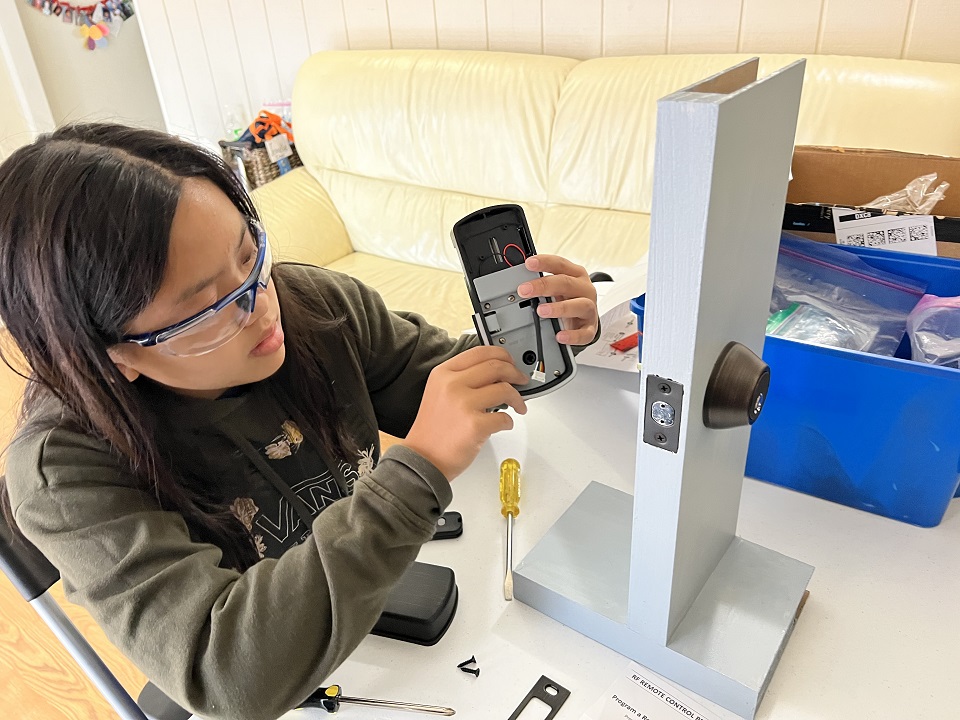These inquisitive kids are asking groundbreaking questions

Broadcom MASTERS finalist Anthony Hill says it’s ok to ask crazy questions. Like, “what happens if you grow plants on Mars?” He believes that “asking crazy questions is a great way to make advancements in society.”
Anthony showcased his project at the Broadcom MASTERS Project Showcase at Union Station in Washington, D.C. on October 21, 2017. He is one of the 30 Broadcom MASTERS 2017 finalists chosen to come to D.C. to participate in challenges, share their projects with judges and the public, and compete to win more than $100,000 in awards.
Asking crazy questions is a great way to make advancements in society.
After watching the 2015 Ridley Scott film The Martian while at a Martian survival camp, Anthony, of Salt Lake City, Utah, became interested in testing the feasibility of plant growth on Mars. He simulated Martian-like atmospheric conditions on plants with a vacuum chamber. His results showed that plants could survive in these conditions, and that plants that were higher in cellulose, like grass, were the most resilient.

At the Broadcom MASTERS 2017 project showcase at Union Station, Anthony urged visitors to understand “there’s no such thing as wrong in science.” If you conduct an experiment and the results don’t prove your hypothesis, your hypothesis isn’t wrong, he explained; it’s a way to take the knowledge you gained and apply it to your next hypothesis. “People need to be educated in science terminology, otherwise science can’t be communicated well,” Anthony said.
People need to be educated in science terminology, otherwise science can’t be communicated well.
If given the opportunity, Anthony said he would like to travel to Mars. Clearly, he’s working to make it a reality.

Broadcom MASTERS finalist Robert “Tre” Kent, from Chesterland, Ohio, was concerned after learning that scientific research has shown microplastics are invading our food chain. They are in the fish we eat and the water we drink.
Tre set out to focus his project on whether microplastic contaminants are more abundant in wild or farm-raised clams. He collected 48 clams from Canada, New York, and Virginia, half from the wild and half from farms. He opened each clam, added 4 milliliters of 10 percent potassium hydroxide to dissolve the tissue, and waited for 24 hours to see if any plastics were left behind.
He found that wild clams contained fewer microplastics. Geographic trends in pollution may have contributed to his findings, as New York is the most polluted region and Canada the least.
Seeing something visible helps people understand the impacts of pollution.
“Since all of the farm clams are together, if there’s microplastics in that area they all pick that up,” Tre explained. “Seeing something visible helps people understand the impacts of pollution.”
Meanwhile, Carolyn Almonte, of Burlington, N.J., wants to create an oral sunscreen. Instead of applying lotion or aerosol sunscreen, which can be bad for the environment and not as effective at preventing skin cancers, she’s taking a closer look at this novel and environmentally-friendly alternative.
This project could help people. That’s why I want to get Bixin out to the people.
She read an article that said Bixin, which comes from annatto seeds, could help prevent skin cancer cells from forming. So she tested it out on superworms, Zophobas Morio larvae, exposing them to UVA and UVB radiation. Unlike traditional sunscreens, Bixin is a powder that can be sprinkled on food or a pill to be swallowed that could potentially protect a user from cancerous effects of the sun’s radiation.
Bixin has been used as a food additive in Central America, Carolyn explained. “But when I did research, I could only find one experiment on it.” So she’s doing more. “This project could help people. That’s why I want to get Bixin out to the people.”

Emily Shi is working to design a product that uses biomimicry to condense water just like the Torrey pine tree, which she says has a magical ability to survive droughts. She hopes her research can create more water resources during droughts; such as those that have occurred in her family’s San Diego hometown for the past 10 years.
Currently in the first phase, Emily has conducted a microscopic study of Torrey pine needles. Its needles condense moisture from ocean fog into water droplets that fall down to its roots, essentially feeding itself. “These plants have a special ability to collect water for themselves,” she said.
These plants have a special ability to collect water for itself.
Emily found that the needles’ orientation and makeup are very important. The needles have two rough sides and one smooth, which correlate to its hydroponic and hydrophilic qualities. (Molecules that repel water molecules are hydrophobic, while molecules that form ionic or a hydrogen bond with a water molecule are hydrophilic). When the needles are arranged in tip-up bundles, facing toward the sky, they’re over 50 percent more effective at capturing moisture than when they face tip-down, she explained.
As her friends and family know, engineering such a product isn’t out of character for Emily. She’s been an active member of a robotics team for the last four years.
Read about more projects the Broadcom MASTERS 2017 finalists researched.


